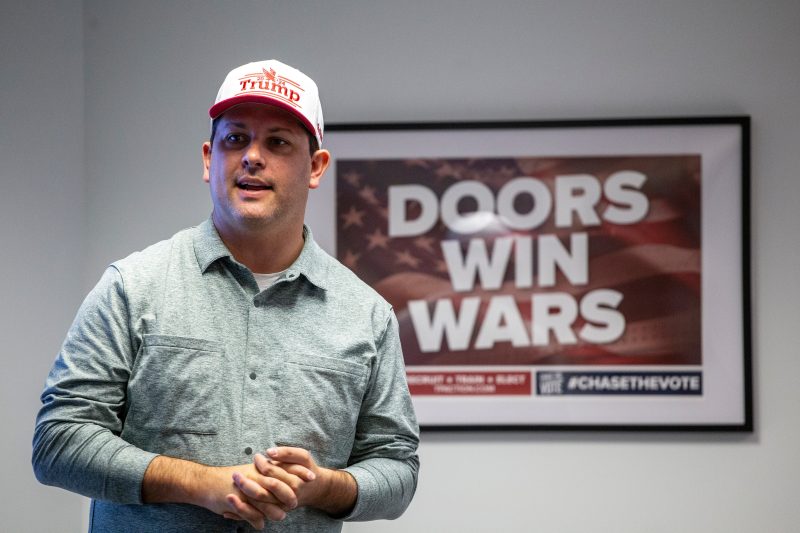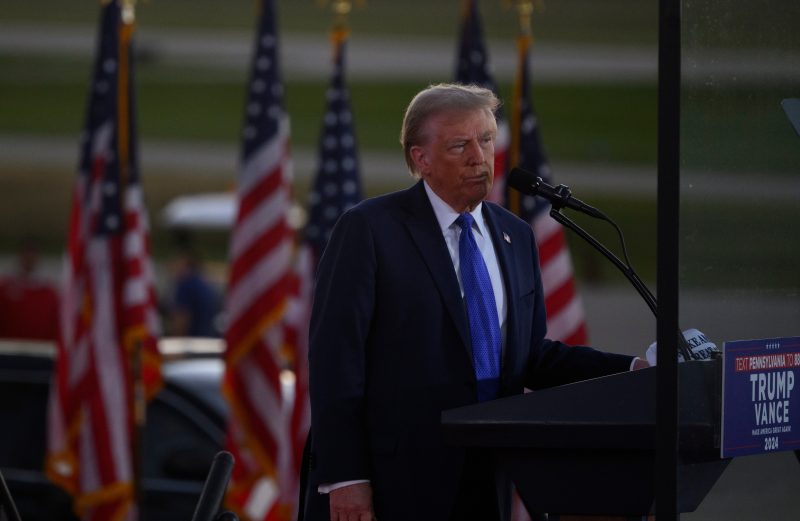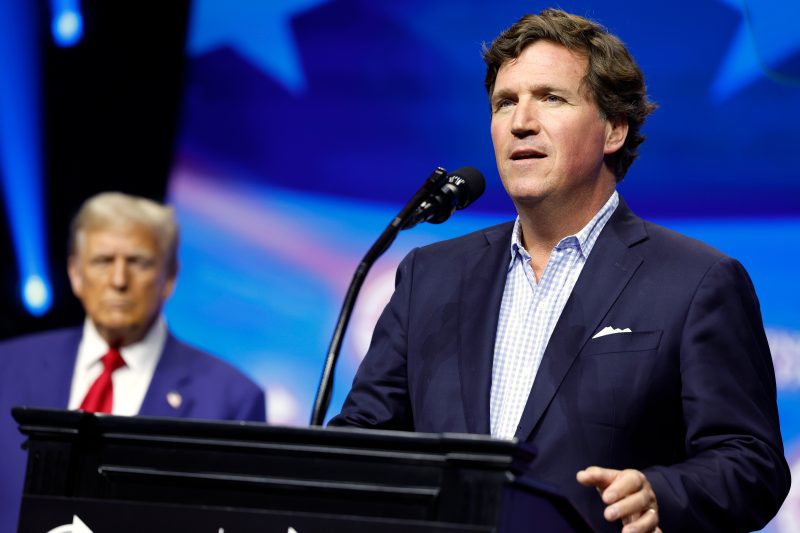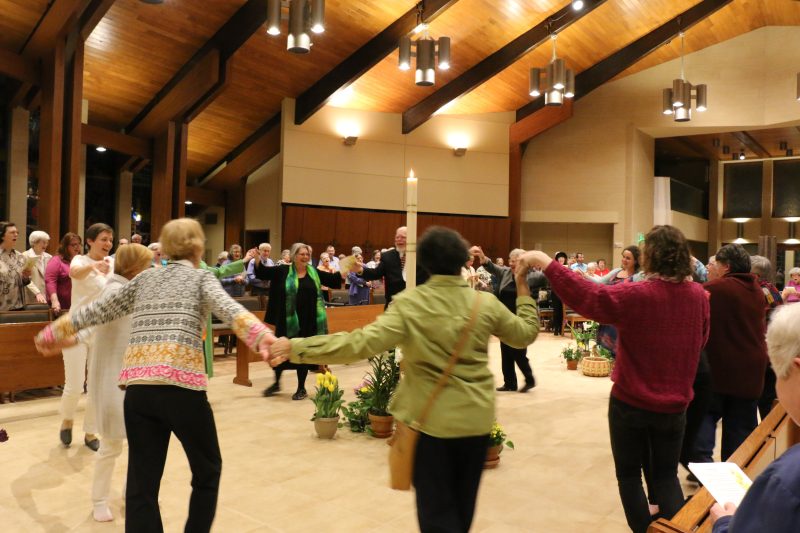
Once Trump is gone, what part of the Republican Party will remain?
Perhaps you, like me, were curious over the weekend about how many people were seeking instructions on the classical art of harp-playing.
The answer to this is hard to ascertain specifically because there aren’t that many harpists (extant or aspiring) out there. In 2022, YouGov asked Americans what instruments they learned to play at any point in their lives; only 1 percent nodded when asked about playing the harp.
Among Republicans, that number dropped to zero percent. This is an important point because Republican politics are the prompt for the question in the first place.
On Saturday, The Washington Post’s Isaac Arnsdorf and Josh Dawsey detailed how Donald Trump’s presidential campaign hopes to leverage outside groups for voter contact before Election Day. They sat in on a presentation from one of those groups, Turning Point Action.
Those contacting voters, staff organizers were told, should not lead with their support for Trump. Instead, the organizers were told that they should “research their marks and start reaching out through Facebook groups, community events, or neighborly gestures,” Arnsdorf and Dawsey documented, “such as recommending plumbers or harp teachers.”
This advice was admittedly at odds with the instructions on another slide: “BE NORMAL. BE NORMAL. BE NORMAL.” Harp-playing is demonstrably not a normal avocation.
You can see why this component of the story attracted so much attention, particularly given the synchronicity between “BE NORMAL” and the left’s recent use of “weird” to describe Trump. But this was not the most important element of the story.
The most important element, instead, was this:
The Republican Party “had been planning an extensive field program, according to documents obtained by The Washington Post,” Arnsdorf and Dawsey report. Those plans, though, have been “discarded” after Trump and his campaign absorbed the party this year.
That takeover was by no means surprising. The year began with Ronna McDaniel leading the Republican National Committee (RNC), something she’d done since shortly before Trump took office as president. She was robustly loyal to Trump, even reportedly agreeing to drop her maiden name of “Romney” in deference to his hostility to her uncle. But she was also seeking to balance the needs of the party with the needs of its most influential figure, to deploy the power of the institution in ways that weren’t always centered around Trump.
And now she’s gone. The party’s new co-chairs include Trump’s daughter-in-law Lara Trump. Her first instinct when presented with a Republican Senate candidate who lightly criticized her father-in-law was to say that the candidate “doesn’t deserve the respect of anyone in the Republican Party.”
Since it became obvious that Trump would be the party’s presidential nominee once again this year — since the first half of 2023, in other words — he’s finalized his control over Republican institutions either directly or indirectly. Senate Minority Leader Mitch McConnell (R-Ky.) announced that he would step down from caucus leadership ahead of the next congress. The party’s 2024 platform was a pastiche of Trump-authored Trumpisms. Like the Trump Organization before it, the GOP is mostly just a collection of brands under the control of Trump himself.
This brings us back to voter outreach efforts. Such efforts, generally categorized as “get out the vote” or GOTV, has not traditionally been one of the Republican Party’s strengths. The Democratic Party, bolstered by labor unions, had a history of strong GOTV efforts in part because its voting base was less likely to turn out of its own accord. Only in more recent elections did the national GOP match that push, investing in GOTV and in building a database of voters that could be used over multiple cycles and by multiple candidates.
For the party, this offered two benefits. It made their candidates more likely to win, given the increased ability to target specific low-propensity voters and push them to vote. More importantly, it built the party. It allowed them to collect new data on voters and on volunteers. It gave them something to offer to candidates — data and resources — that could help them shape candidate campaigns and policies. This increased the institutional power of the Republican Party.
But since he first became the front-runner for the Republican nomination in the 2016 presidential contest, Trump has made obvious that he intends to suck every drop of institutional power out of the GOP for his use. It’s not that he’s hostile to the party necessarily, though he obviously is often at odds with its traditional power structure. It’s just that the party has something he wants — power and resources — and he’s going to use them as he sees fit … without worrying about replenishing them.
Who benefits from outsourcing GOTV efforts to Turning Point Action (TPA)? The youth-focused group can send its data on harp enthusiasts back to the GOP, but it’s safe to assume that won’t be a priority. TPA is interested in building its own institutional power, and is using its strong relationship with Trump to do so. It’s building its database of volunteers and using the lure of volunteering to help Trump to do so. And, importantly, its effort will be an institutional success even if Trump loses. The central incentive is on raising and spending the $100 million Turning Point Action is budgeting for this year.
The Republican Party is doing some organizing on Trump’s behalf. It plans, according to Lara Trump, to dispatch a small army of poll-watchers to polling places on Election Day to ensure that no rampant fraud occurs — as it didn’t in 2020 when the party similarly tried to encourage volunteers to keep an eye on voters. I encountered some in Pennsylvania the weekend before Election Day that year; the party’s original GOTV plan for the state this year noted (according to Arsndorf and Dawsey) that the failure to instead turn out voters was a central challenge to Trump’s reelection bid.
That’s the GOTV plan that has now been scuttled. But no worries. By November, Turning Point Action will know just which Pennsylvanians need plumbers and harp instructors. And they’ll all get fundraising emails from Turning Point for the next few years, whoever’s in the White House.



